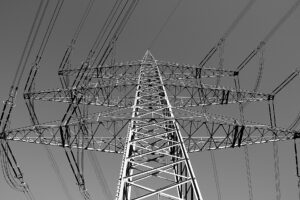Over the past couple of decades, fiber Bragg gratings have been used effectively as sensors for a wide variety of applications. A rapid increase in the popularity of FBG sensors is explained by the numerous advantages that they provide. FBG sensors are superior to other traditional means of environment measurement. FBG sensors are immune to electromagnetic interference and are resistant to harsh environments and corrosion. FBG sensors can be multiplexed; this ability was originally developed for optical network applications, however, it can be exploited in order to create sensor geometries that are quasi-distributed. This technology can be used for real-time measurements of temperature, strain, deformation, etc. Some popular and promising applications of fiber optic sensors include structural health monitoring of civil structures, for haptic sensing for robot appendages, and ‘smart skins’ for ships or aerospace vehicles.
Distributed FBG sensors are utilized in the oil and gas sector by oil field service companies for temperature and pressure monitoring of oil well downhole and reservoirs. Harsh environments of 20 kpsi and 185◦C are common there; the use of FBG sensors provides accurate measurement and collection of all the data parameters important for the field.
FBG sensors can also be utilized in environments where high temperatures are prevalent. Such environments are often found within power plants, gas or aerospace turbines, combustion systems, etc. Most FBG temperature sensors are thermally stable at least up to 1000 ◦C in standard telecom fibers.
Another area of application for FBG temperature sensors is gas turbine monitoring. The FBG sensor arrays facilitate measurements of hot gas working temperatures within a turbine; this data is critical for safe, reliable, efficient, and cost-effective operation. Accurate measurements of the blades and vanes inside the turbines will allow preventing overheating of the turbine blades due to inhomogeneous combustions.
Optromix, Inc. is a U.S. manufacturer of innovative fiber optic products for the global market, based in Cambridge, MA. Our team always strives to provide the most technologically advanced fiber optic solutions for our clients. Our main goal is to deliver the best quality fiber optic products to our clients. We produce a wide range of fiber optic devices, including our cutting-edge customized fiber optic Bragg grating product line and fiber Bragg grating sensor systems.


 A traditional way of monitoring structural health is through the use of piezoelectric transducers; these devices convert pressure to an electric voltage. Transducers are reliable and accurate in most working conditions except in cases of corrosive environments or under high temperatures, above 300° Celsius. Harsh conditions influence reliability. accuracy, and usefulness of transducers in a negative way.
A traditional way of monitoring structural health is through the use of piezoelectric transducers; these devices convert pressure to an electric voltage. Transducers are reliable and accurate in most working conditions except in cases of corrosive environments or under high temperatures, above 300° Celsius. Harsh conditions influence reliability. accuracy, and usefulness of transducers in a negative way. The demand for data is growing exponentially, piling pressure on networks to deliver more data, faster, over longer distances.
The demand for data is growing exponentially, piling pressure on networks to deliver more data, faster, over longer distances.  Recent events in the nuclear industry have shown the weaknesses in the control of the critical systems that ensure the safety of the nuclear plant. The extreme and accidental conditions, such as high temperatures and high levels of radiation sabotage the security of nuclear power plants, leading to major disasters. The main issue for the nuclear industry is to enhance the security of existing nuclear power plants and improve the design of the future ones. In the case of emergency or accidental conditions in nuclear reactors the following thermodynamic parameters need to be known in order to facilitate appropriate actions: temperature, pressure, water level, radiation level. The accuracy of the obtained information directly influences the decisions made by the operators. The monitoring instruments used inside the nuclear fuel pools need to better withstand severe conditions that occur during malfunctions and accidents, namely high temperatures and high levels of radiation. The strict safety regulations have pushed the fiber optic market to develop sensors based on optical fibers. Optical fiber sensors, like
Recent events in the nuclear industry have shown the weaknesses in the control of the critical systems that ensure the safety of the nuclear plant. The extreme and accidental conditions, such as high temperatures and high levels of radiation sabotage the security of nuclear power plants, leading to major disasters. The main issue for the nuclear industry is to enhance the security of existing nuclear power plants and improve the design of the future ones. In the case of emergency or accidental conditions in nuclear reactors the following thermodynamic parameters need to be known in order to facilitate appropriate actions: temperature, pressure, water level, radiation level. The accuracy of the obtained information directly influences the decisions made by the operators. The monitoring instruments used inside the nuclear fuel pools need to better withstand severe conditions that occur during malfunctions and accidents, namely high temperatures and high levels of radiation. The strict safety regulations have pushed the fiber optic market to develop sensors based on optical fibers. Optical fiber sensors, like  Electricity is the backbone of modern civilization; it holds the development of both economy and technology. It is established that it is no longer an option to rely on existing infrastructure as there is a need to constantly evolve and adapt to the growing demand of the populace. The state of current infrastructure is weakened by its age of installation or by the growing demand of the population. The breakdown is imminent as it cannot bear the burden of previous years.
Electricity is the backbone of modern civilization; it holds the development of both economy and technology. It is established that it is no longer an option to rely on existing infrastructure as there is a need to constantly evolve and adapt to the growing demand of the populace. The state of current infrastructure is weakened by its age of installation or by the growing demand of the population. The breakdown is imminent as it cannot bear the burden of previous years.